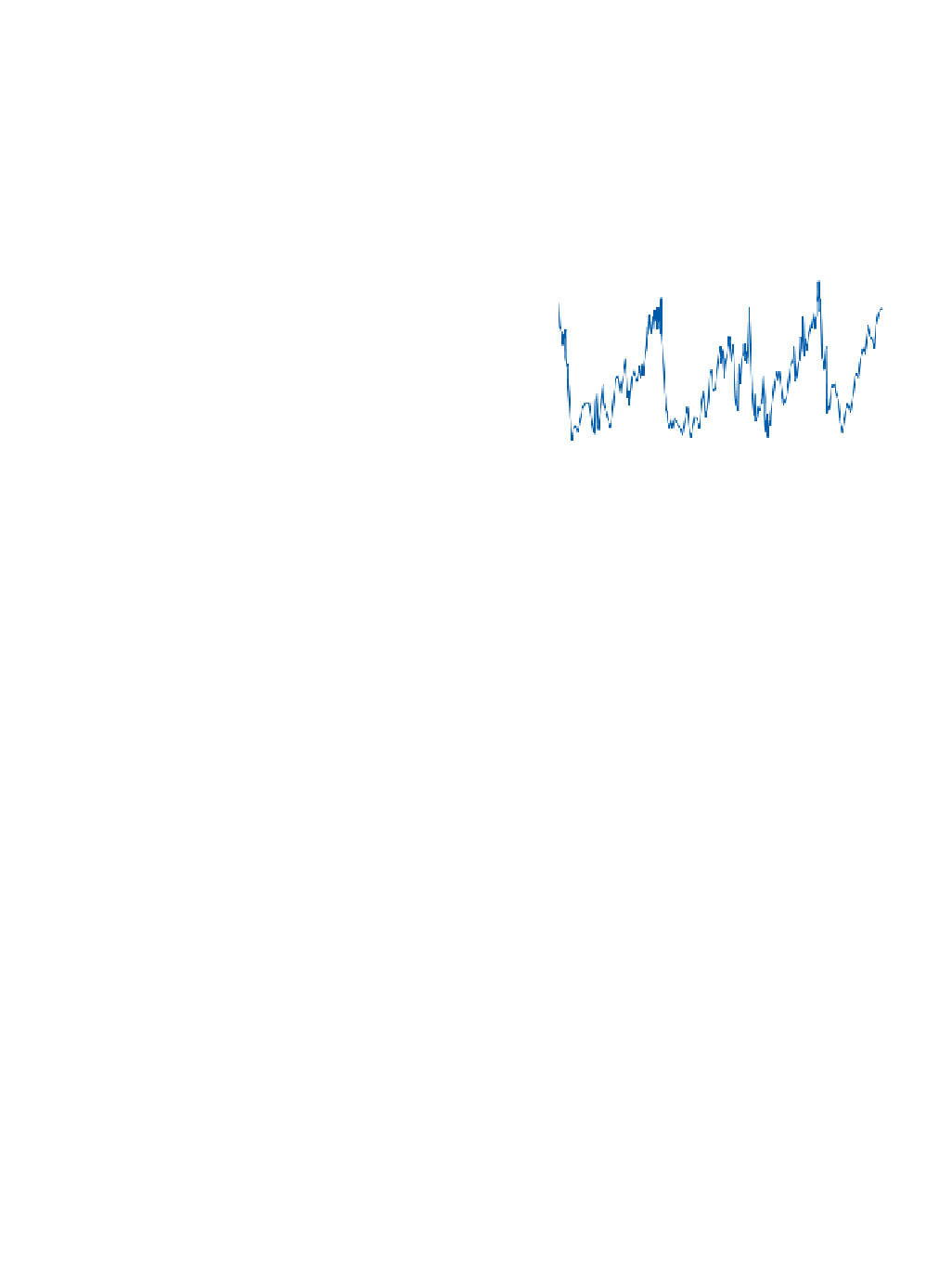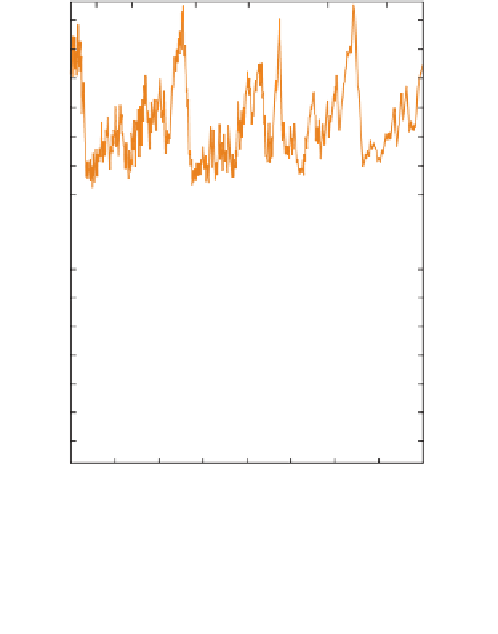Geoscience Reference
In-Depth Information
effects were largely local. Volcanic eruptions at high
latitudes send dust into the circumpolar vortex which
tends to get trapped rather than being dispersed globally.
The impact is less likely to be worldwide. A single major
eruption can have an immediate impact on global climate.
As volcanic activity appears to follow no pattern, it is
possible that several eruptions could occur over a short
period of time to increase the particulate matter in the
stratosphere and increase the potential climatic impact.
This effect may have contributed to the severity of the
Little Ice Age, with major eruptions in 1750-70 and
1810-35.
As well as volcanic dust, the atmosphere contains dust
blown up from the surface. Occasionally falls of red dust
occur in Britain as Saharan dust has been carried
northwards. Adding to the effects of natural dust blow,
agricultural activity may expose bare soil and lead to
major losses of topsoil through wind action. A classic
example of this was during the 1930s drought on the Great
Plains of the central United States when vast quantities of
soil were swept up from the fields and deposited as far
afield as New York and Washington. As soil particles are
usually heavier and are not ejected into the atmosphere
with the force of a volcanic explosion, their climatic
impact tends to be more local. However, they do
backscatter sunlight whilst absorbing some long-wave
radiation from the ground. The net effect depends upon
the albedo of the surface. Man-made particles cause net
warming over snow and ice and most land surfaces but
cooling over the oceans, with their low albedo.
Another aspect of atmospheric composition which is
known to vary is the proportion of carbon dioxide (
Figure
gases which contribute to the greenhouse effect. We would
expect an increase in the proportion of the gas to trap
more long-wave radiation emission from the surface and
increase the mean temperature of the globe. Investigations
have shown a close relationship on a long-term basis
between global temperatures and CO
2
levels, though it is
not clear which increases first or whether the changes are
synchronous. Since 1958 precise measurements of CO
2
levels have been taken at the Mauna Loa observatory on
Hawaii. They show an increase from 315 ppm by volume
to about 380 ppm today, an increase of about 20 per
cent in only fifty years (
Figure 3.6
).
The increase is largely
the effect of fossil fuel burning, though deforestation
and other land use changes have an impact. Other gases
such as methane, nitrogen oxides and halocarbons are
even more effective at absorbing long-wave radiation.
Theory and climate models predict that their increasing
concentrations will have an impact on global tempera-
'HSWKP
)
7
s
&
)
7
s
&
&2
SSPY
&2
SSPY
$JHN\U%3
variations recorded at Vostok deep ice core in Antarctica.
Source: After Petit et al.(1999)
tures. At present their concentrations in the atmosphere
are low, though three are increasing as a result of human
activities (
Figure 9.15
).
Chlorofluorocarbons (part of the
halocarbon group) have stopped increasing following the
Montreal Protocol to cease production of these artificial
gases.
Although less publicized, the increase in methane
(CH
4
) is causing concern, as it is a by-product of both
energy consumption and agricultural activity. It is believed
that a large portion of the methane increase may be the
result of anaerobic decomposition of organic matter
associated with rice paddy cultivation and the digestive
processes of ruminants such as cattle. As both rice area and
ruminant numbers have increased with the rising human
population over the last two centuries, the present annual
increase is about 1 per cent per year compared with 0·48
per cent for carbon dioxide. Much methane is stored on
the sea bed as a
gas hydrate
, formed under conditions
of high pressure and low temperature in crystalline
structures resembling ice. It has been estimated that about
10,000 Gt of carbon as methane are stored on the sea bed.
As temperatures rise, this could add another source of
methane to the atmosphere. A further potential threat of
increased methane is from permafrost areas, where
methane can be released as global warming melts parts of
the permanently frozen ground.










































